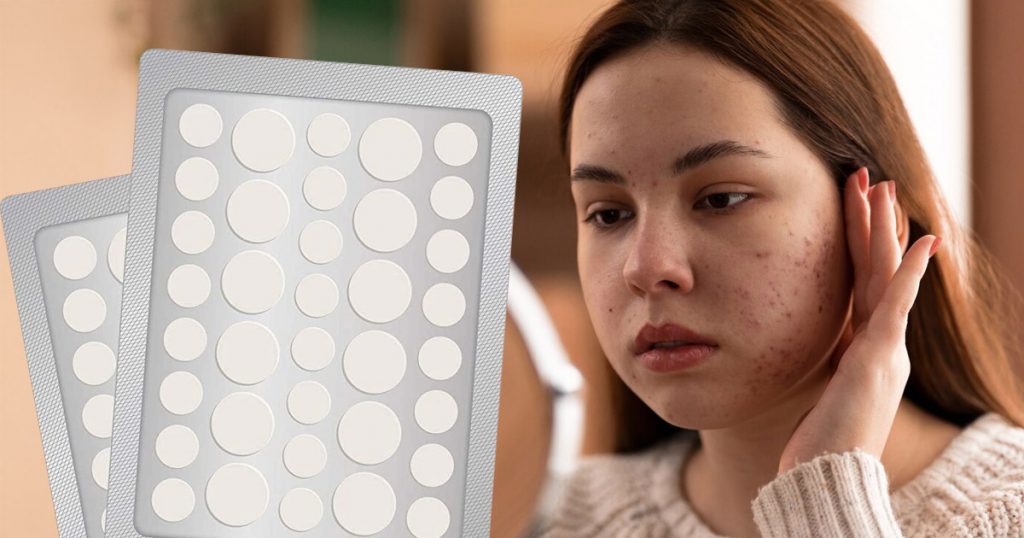Acne scars can be frustrating, especially when they linger long after your breakouts are gone. Many people turn to different treatments in hopes of reducing the appearance of scars. One such treatment that has gained popularity is hydrocolloid. But does hydrocolloid help acne scars?
What is a hydrocolloid?
Hydrocolloid is a material often used in wound care. It’s a gel-like substance that helps maintain moisture, protecting the area from infection and speeding up healing. While hydrocolloid is commonly used for minor cuts or blisters, it’s also found in acne patches. These patches are applied directly to pimples or acne scars to help promote healing and reduce scarring.
When it comes to acne scars, hydrocolloid patches work by keeping the skin moist, which can help prevent scarring and support quicker recovery.
Does hydrocolloid help acne scars?
Hydrocolloid patches are designed to promote healing by providing a protective layer over the skin. Here’s how they help with acne scars:
- Hydrocolloid patches absorb excess fluids and pus, which is important for preventing infection and reducing the risk of scarring.
- The moist environment created by hydrocolloids helps heal the skin without drying out or becoming hard, both of which can lead to scarring.
- Hydrocolloid patches protect the skin from further irritation, which helps reduce swelling and redness, making scarring less likely.
- One of the biggest benefits of hydrocolloid patches is that they prevent you from touching or picking at acne, which can worsen scarring.
Hydrocolloid vs Silicone for Scars
When comparing hydrocolloid and silicone for scar treatment, it’s important to understand how each works.
Hydrocolloid patches are best for healing fresh acne lesions and preventing new scars. Research shows that hydrocolloid patches on the face absorb drainage from pimples, reducing their appearance. The waterproof outer layer also helps protect pimples from bacteria. These patches are great for early-stage scars or active acne.
On the other hand, silicone sheets or gels are used for treating older scars. They work by hydrating the scar tissue, reducing inflammation, and promoting collagen production. Silicone is especially effective for raised or hypertrophic scars. For more severe acne scars, silicone scar sheets may be a better option.
When to use hydrocolloids for acne scars?
Hydrocolloid patches work best for active acne and can help prevent new scars. Here’s when to use them:
For Active Pimples
They are most effective on pimples that are still healing, especially fluid-filled ones like pustules. The patch absorbs the fluid and helps the skin heal faster.
After Popping a Pimple
If you’ve popped a pimple, the patch can absorb the drainage and protect the area from infection, which can reduce scarring.
To Prevent Early Scarring
Hydrocolloid patches can help stop new scars from forming in the early stages of healing.
Hydrocolloid patches are best for active acne or preventing scars. They are not meant for treating old or deep scars.
How to use hydrocolloids in your skincare routine?
To use hydrocolloid patches effectively in your skincare routine, follow these simple steps:
- Always start with clean skin to avoid adding bacteria to your pores.
- Place the hydrocolloid patch directly on the pimple once it has a head (if applicable). Press down gently to ensure it sticks well.
- Let the patch work for at least 6-8 hours or overnight.
- Peel off the patch slowly to avoid irritating your skin.
Additional Tips for Managing Acne Scars
To help reduce acne scars, try these extra steps:
- Using sunscreen helps protect your skin from the sun, as UV rays can darken scars.
- Incorporating retinoids into your routine can speed up skin renewal and improve texture over time.
- If scars persist, consulting a dermatologist can provide professional treatments like chemical peels or laser therapy.
The Role of Hydrocolloid in Preventing Acne Scars
Hydrocolloid patches can be a helpful tool for preventing acne scars, especially during the healing stage of active pimples. They work by keeping the skin moist and protecting it from irritation. While they can’t treat old scars, using them along with sunscreen, retinoids, and other treatments can help prevent new scars and support healing. The key is knowing when to use them—mainly for fresh acne, not for older scars.
